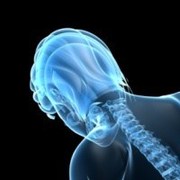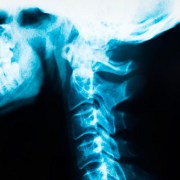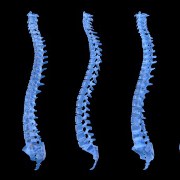Symptoms
If you have any of these symptoms, do not assume it is due to cervical myelopathy. These symptoms may be caused by other conditions. Tell your doctor if you have any of these:
- Pain in shoulder and arms
- Tingling or numbness in arms and legs
- Trouble walking or balancing
- Muscle weakness
- Problems flexing neck
- Dizziness
- Problems with fine motor control (eg, buttoning a shirt)
- Spastic movements
- Bowel or bladder problems
- Weakness below waist or in all four limbs (in severe cases)
Diagnosis
Your doctor will ask about your symptoms and medical history. She will also do a physical exam, focusing on any muscle weakness. In addition, a neurological exam may be done, which assesses:
- Reflexes
- Vision
- Mental state
Tests may include:
- X-ray—a test that uses radiation to take a picture of structures inside the body, especially bones
- MRI scan—a test that uses magnetic waves to make pictures of structures inside the body, including the spinal cord
- CT myelogram—imaging test that uses a special dye to view the spinal cord and the area surrounding it
- Electromyography (EMG)—a test that measures the electrical activity that muscles generate at rest and in response to muscle contraction
- Somatosensory evoked potentials—a test that evaluates conduction of the nerves in the spinal cord
Please be aware that this information is provided to supplement the care provided by your physician. It is neither intended nor implied to be a substitute for professional medical advice. CALL YOUR HEALTHCARE PROVIDER IMMEDIATELY IF YOU THINK YOU MAY HAVE A MEDICAL EMERGENCY. Always seek the advice of your physician or other qualified health provider prior to starting any new treatment or with any questions you may have regarding a medical condition. Copyright © 2024 EBSCO Publishing All rights reserved.
 What are the Treatment Options for Cervical Spondylotic Myelopathy?
What are the Treatment Options for Cervical Spondylotic Myelopathy?

